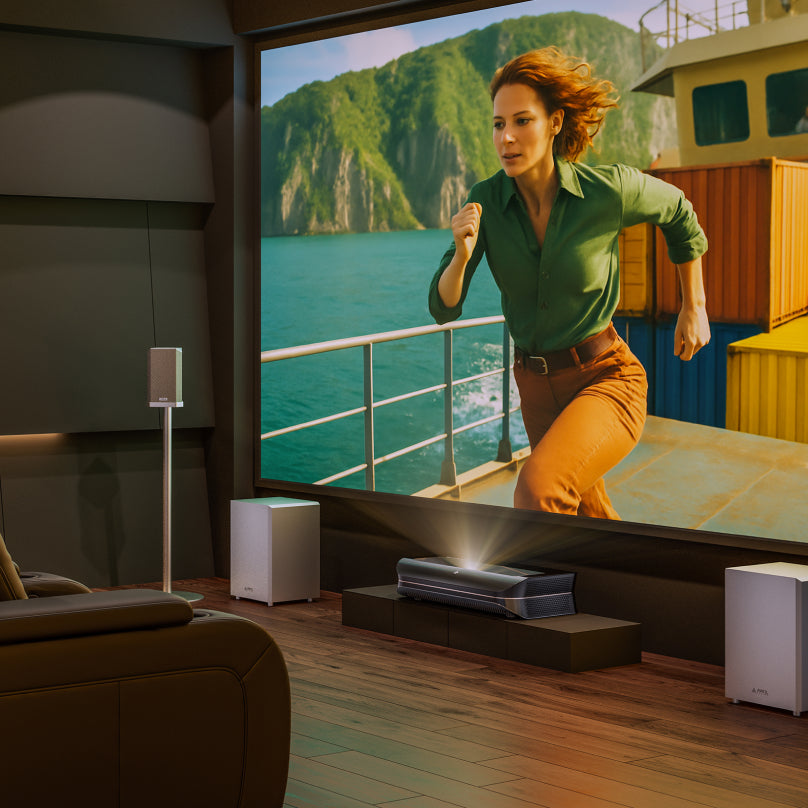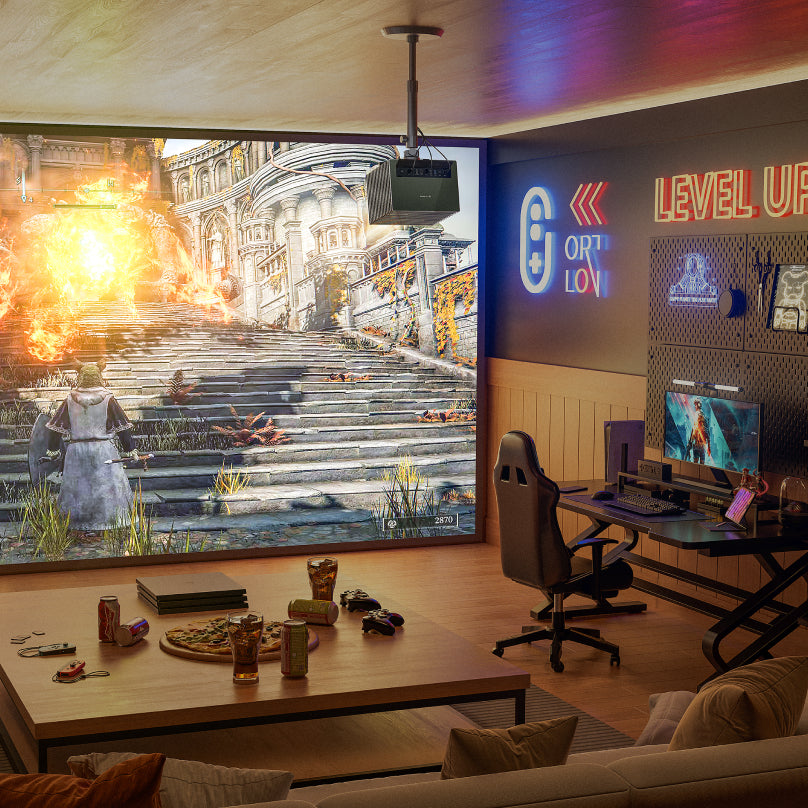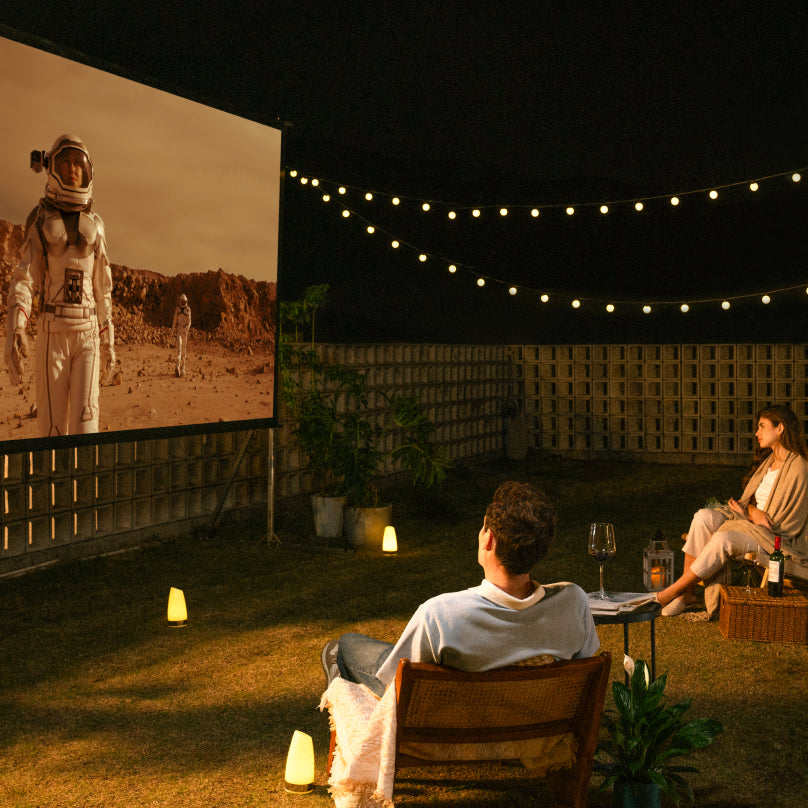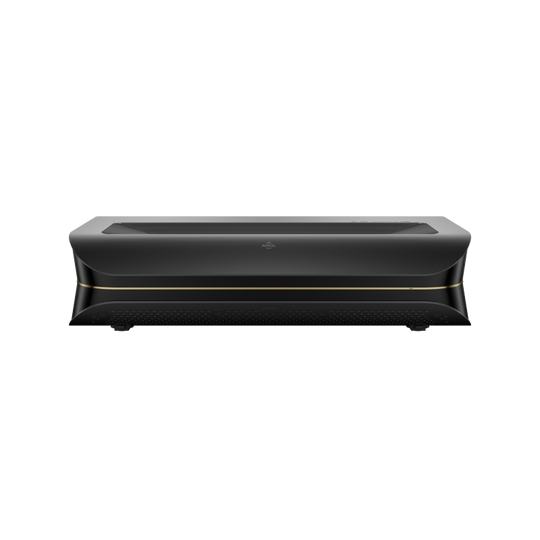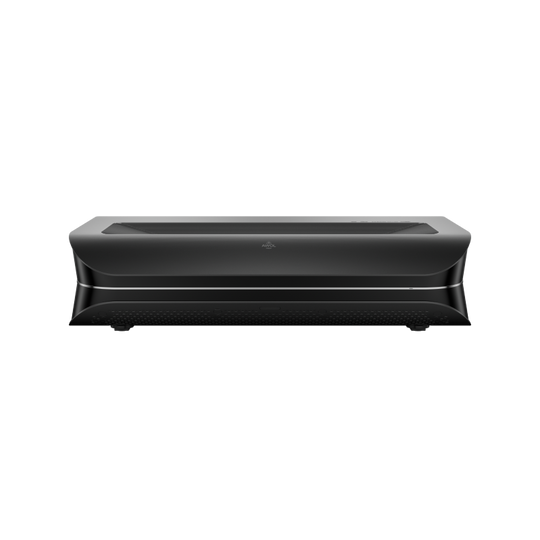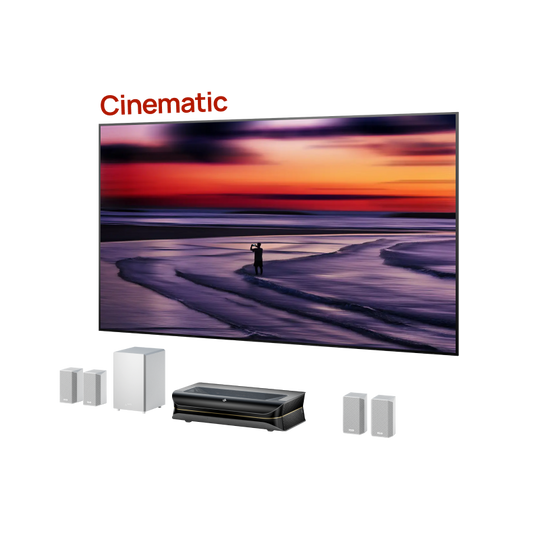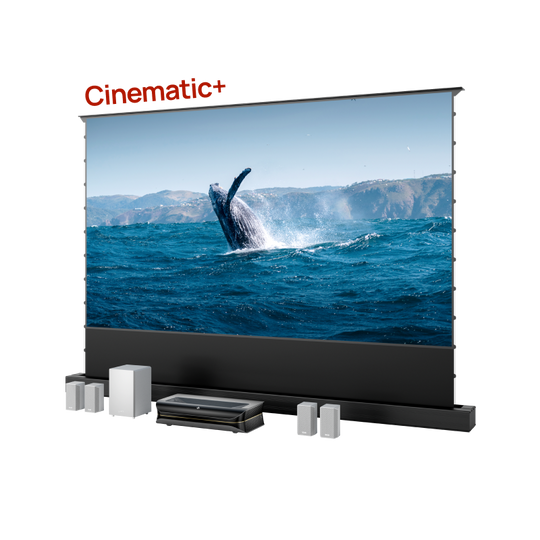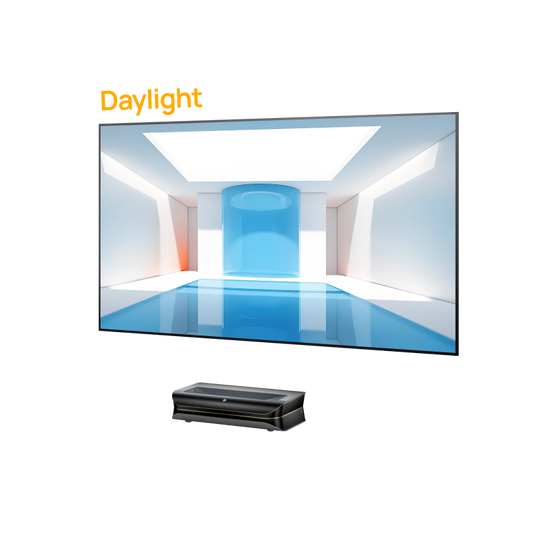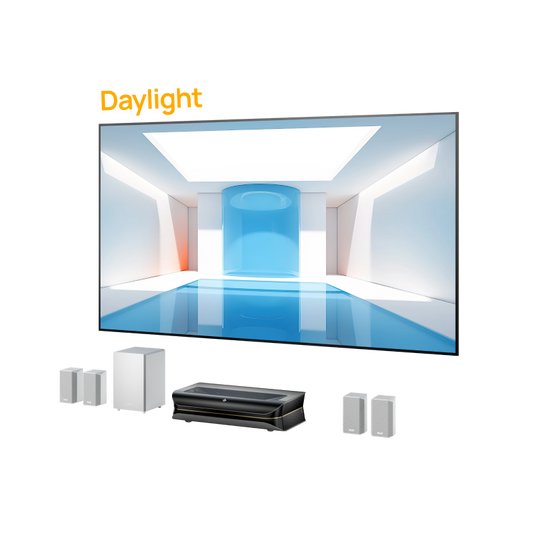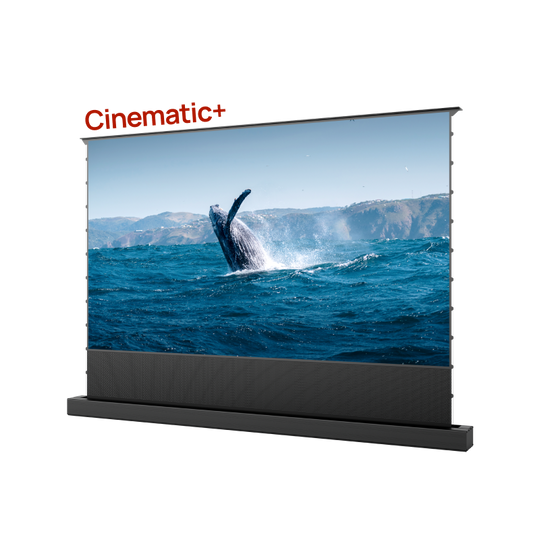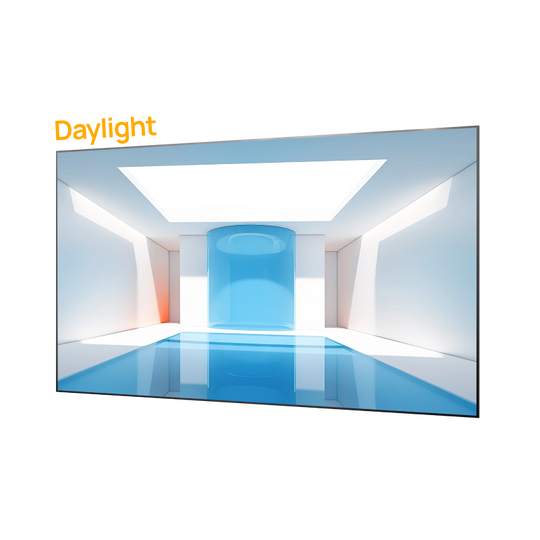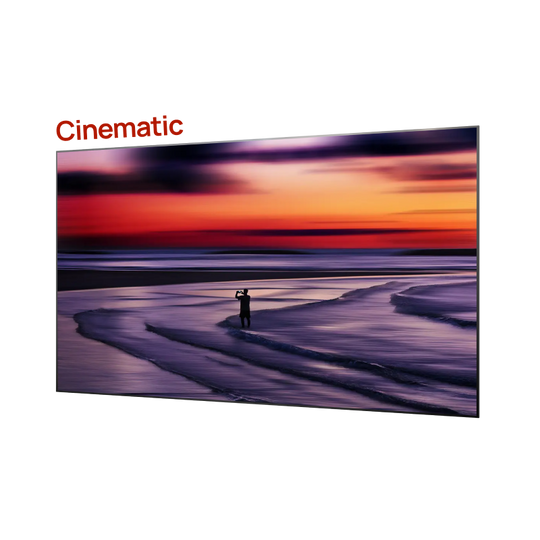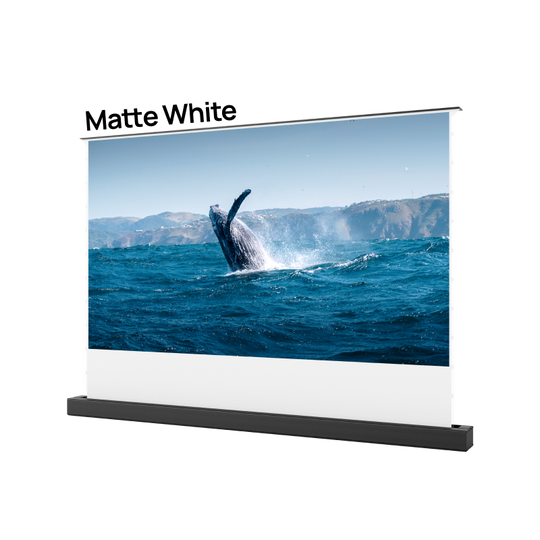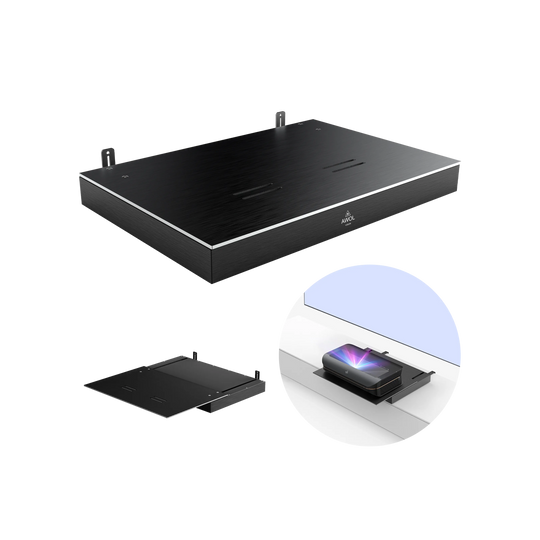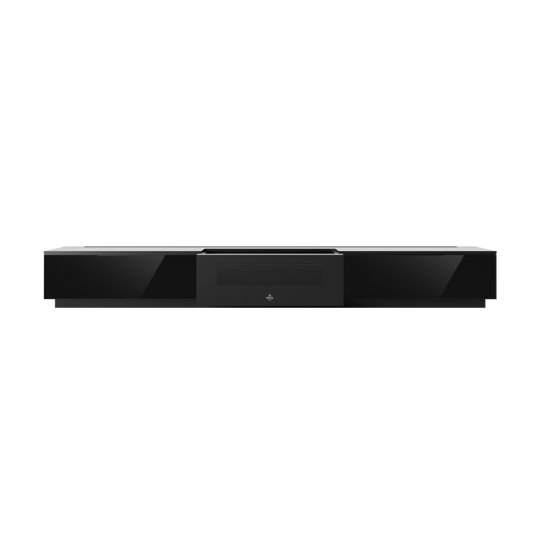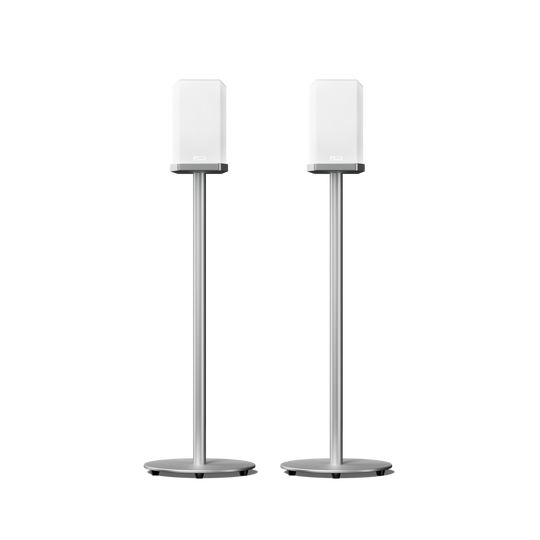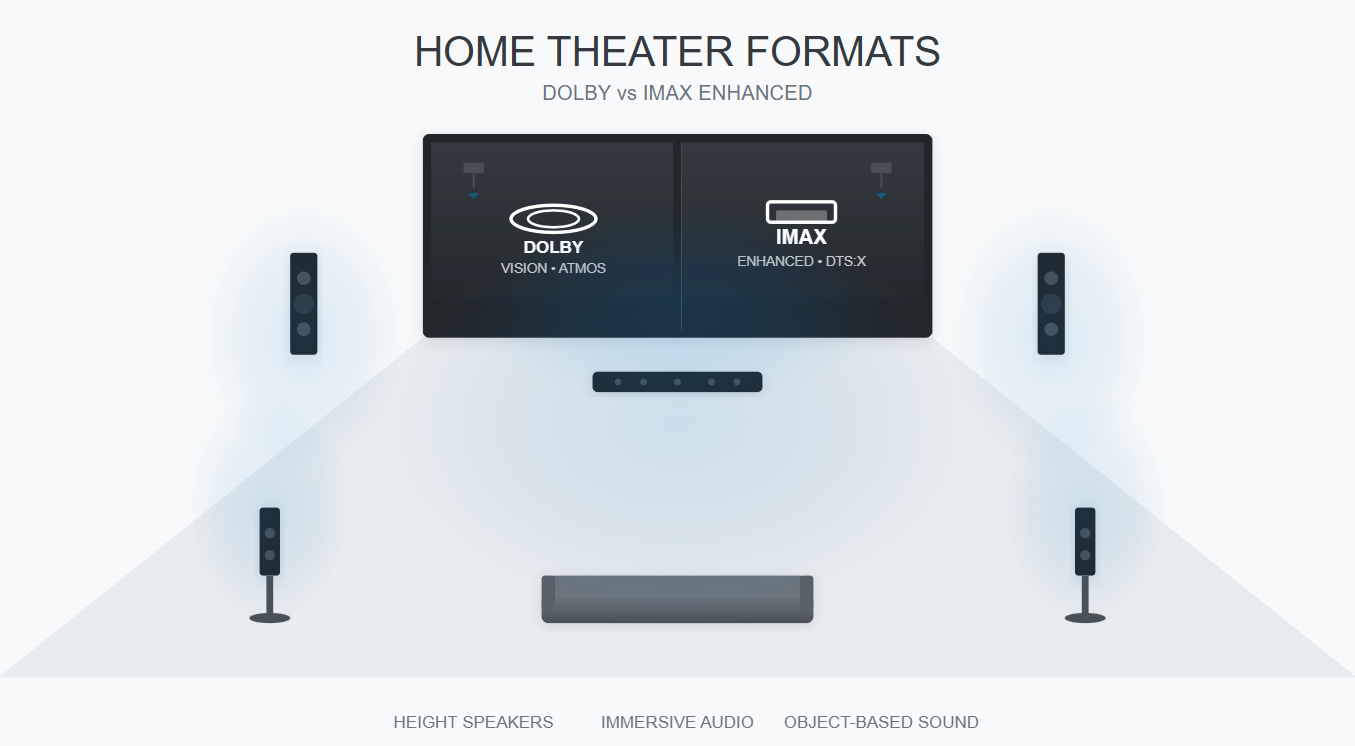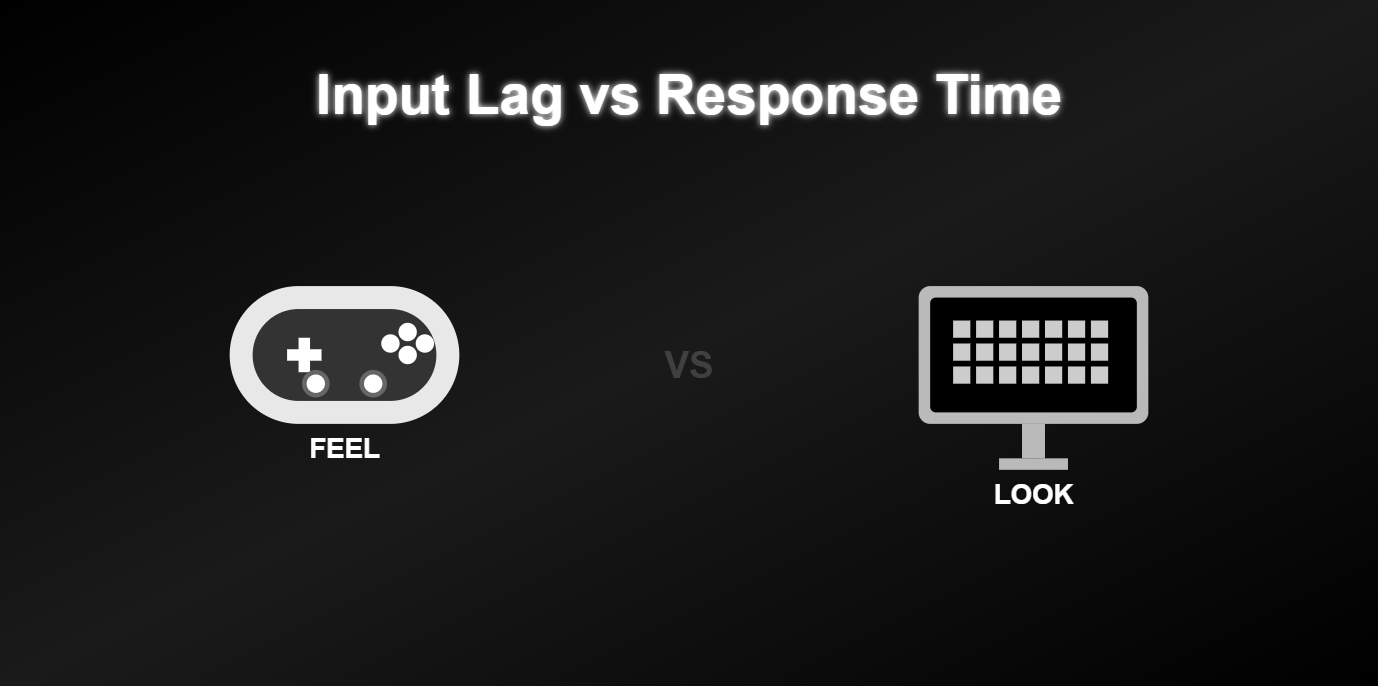If you're on a quest to build the ultimate home theater, you've likely typed "IMAX projector for home" into a search bar. That name is synonymous with the most spectacular, awe-inspiring movie experience possible. It evokes a massive, floor-to-ceiling image, stunningly bright and clear, with sound you can feel in your chest.
But this is where the search gets confusing. You can't actually buy the same projector used in a commercial IMAX theater. Instead, what's available for home use is a certification program called "IMAX Enhanced."

While that's one path to a great experience, what if you could achieve—and in many ways surpass—that cinematic quality by focusing on the core technologies that really matter? This is the core of the Dolby Cinema vs. IMAX debate for home users.
This guide will deconstruct the "IMAX experience" into its fundamental building blocks. We'll show you what to focus on to build a home cinema that delivers that jaw-dropping feeling, component by component.
Component 1: Scale and Brightness
The first and most defining quality of the IMAX experience is its breathtaking scale. The image isn't just big; it's a wall of light that fills your entire field of vision, pulling you completely into the film. Recreating this at home requires two things: a truly large screen and the power to illuminate it properly.

This is where a high-performance Ultra Short Throw (UST) projector excels. It can create a massive 100-inch, 120-inch, or even 150-inch image while sitting just inches from the wall. If you're wondering what size projector screen you need, the answer is often as big as your wall can comfortably fit. However, a huge image is nothing without the power to make it vibrant. To get that punchy, dynamic picture—even in a living room with some ambient light—you need exceptional brightness.
This is why a projector like the AWOL Vision LTV-3500 Pro is engineered to produce a brilliant 3000 ISO lumens. But the projector is only half of the equation. For maximum impact, it must be paired with a specialized screen. An Ambient Light Rejecting (ALR) screen is designed to reflect the projector's light directly at the viewer while absorbing stray light from lamps or windows. A high-quality ALR screen, like the AWOL Vision Cinematic+ Screen, ensures the image is always rich and saturated, never washed out.
Component 2: Color Purity and Dynamic Range
A truly cinematic image needs color that is not just vivid, but accurate. It also requires extreme contrast—the ability to show the brightest highlights and the deepest, most detailed shadows in the same frame.

-
Color Purity: The key to breathtaking color is the light source. The most advanced projector technology available today is a triple-laser engine. Unlike older lamp or single-laser projectors, a triple-laser system generates pure Red, Green, and Blue light, allowing it to reproduce an incredibly wide range of colors. The AWOL Vision LTV-3500 Pro, for example, can display 107% of the BT.2020 color space, a standard so wide that it exceeds the color capabilities of most commercial cinemas.
-
Dynamic Range: The pinnacle of High Dynamic Range (HDR) technology is Dolby Vision. Unlike standard HDR that uses one setting for an entire movie, Dolby Vision uses dynamic metadata to optimize the picture frame by frame. This ensures every scene is displayed with the maximum possible detail, depth, and impact. The inclusion of Dolby Vision in the LTV-3500 Pro was a deliberate engineering choice to provide the absolute best HDR performance possible.
Component 3: A True Dome of Immersive, Integrated Sound
In a commercial cinema, the sound isn't just around you; it comes from the screen itself. The dialogue is perfectly anchored to the actors' mouths, creating a seamless fusion of audio and video. This is the ultimate goal for immersive audio at home.

Object-based audio formats like Dolby Atmos and DTS:X create a "dome of sound," but to achieve true integration, the placement of the center speaker is critical. The solution is an acoustically transparent screen. This special screen material allows sound to pass through it without distortion, so you can place your center channel speaker directly behind it. The AWOL Vision Cinematic+ Screen is an acoustically transparent surface, designed specifically for this purpose.
The AWOL Vision LTV-3500 Pro flawlessly passes the highest-quality audio signals via its eARC port to a dedicated audio setup. For a fully integrated solution, the AWOL Vision ThunderBeat speaker system is engineered to complete the cinematic soundstage. Featuring 480W of total audio power and deep bass from 120W dual subwoofers, it creates a powerful wireless surround sound experience designed to sync perfectly with the projector.
Component 4: Seamless Integration

Part of a premium home cinema is not just how it performs, but how it fits into your life and your living space. A truly modern system should deliver a massive, awe-inspiring experience when you want it, and disappear when you don’t.
This is where the combination of a UST projector and a motorized screen becomes the most elegant solution. A motorized, floor-rising screen like the AWOL Vision Cinematic+ offers a clean, minimalist aesthetic. With the press of a button, the massive screen ascends for movie night and retracts completely out of sight afterward, preserving the design of your room.
Conclusion: Assembling a System That's Better Than the Cinema
As you can see, the "IMAX experience" you're searching for isn't a single product or a certification label. It's the stunning result of achieving excellence across several key components:
-
Massive Scale from a UST projector.
-
Vibrant Brightness to make the image pop.
-
Pure, Rich Color from a triple-laser engine.
-
Perfect, Frame-by-Frame Contrast from Dolby Vision.
-
Integrated, Immersive Audio from a well-placed sound system and an acoustically transparent screen.
Instead of chasing a brand name, focus on these foundational pillars of quality. By choosing components that are engineered to excel in each category—and designed to work together in a synergistic system—you can build a home theater that doesn't just mimic the cinema, but in key areas like color fidelity and dynamic range, actually surpasses it.
